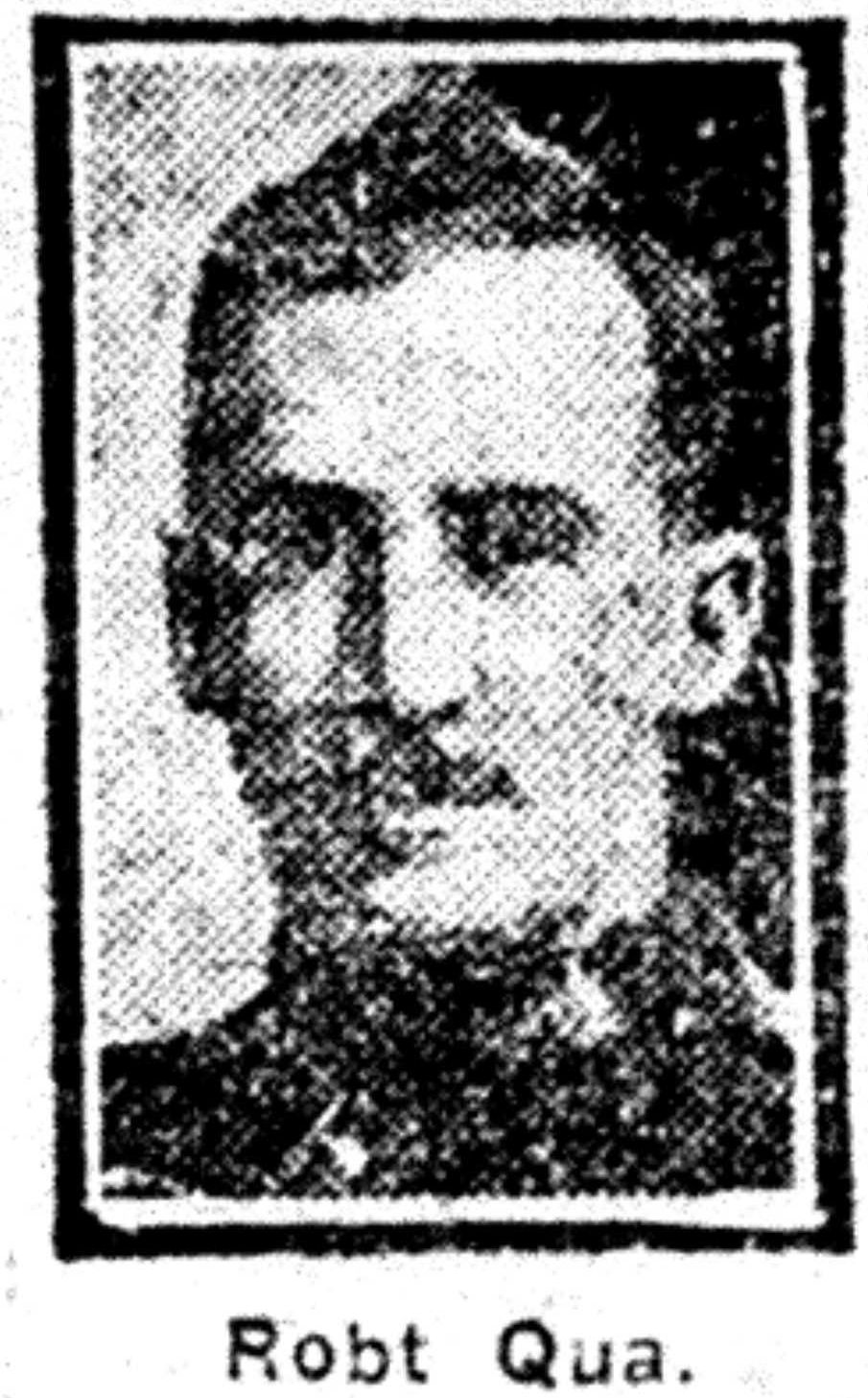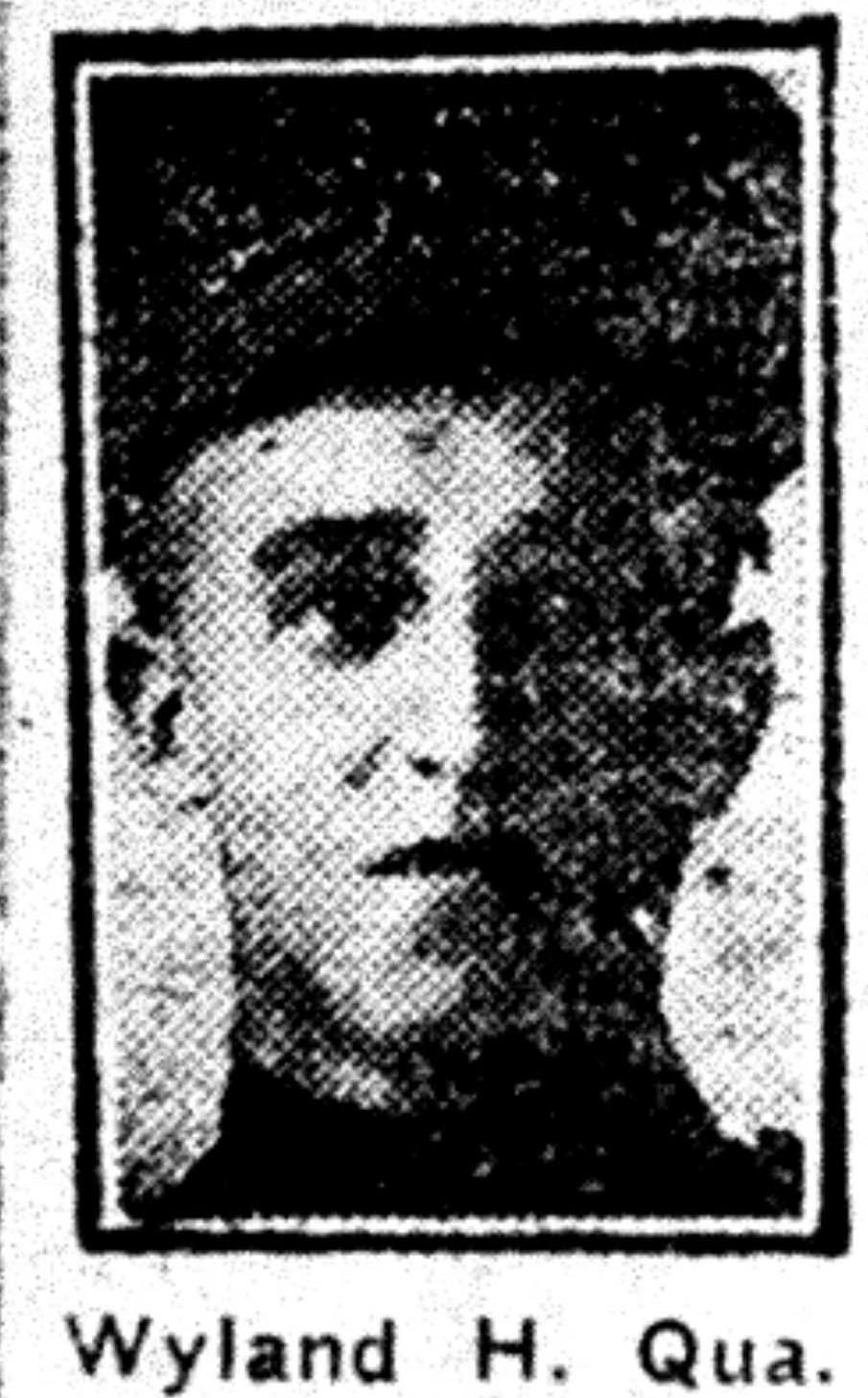
863039 Cpl. Robert James Qua was the son of Samuel Edward Qua (1860-1923) and Alice Qua (née Bown) of Toronto, Ontario, Canada. Robert was born in Toronto on 1st August 1886 and he was their second child. Samuel worked in Toronto in the wholesale grocery business.
Robert had five siblings:
Edward Francis Qua (1884-1919) - was married, had three daughters and died from the Spanish Flu pandemic aged 34,
Harvey Samuel Qua (1888-1894) - died as a result of an injury followed by tetanus,
Bennett Asher Qua (1893-1908) - was accidentally killed trying to board a moving street-car on King St. in Toronto,
Wyland Harvey Qua (1897-1933) - WW1 veteran, see below,
Ethel Corbett (née Qua) (1899-1972).
As a young adult, Robert was trained and began working as a customs broker in Toronto. On 8th March 1916, Robert (then aged 29) married Marjorie Isabel Patterson (aged 22) in Toronto.
On 13th March 1916 (five days after his wedding), Robert voluntarily enlisted for WW1 and attested into the 180th (Sportsmen) Battalion of the Canadian Expeditionary Force (CEF). The unit was based in Toronto, Ontario, and began recruiting during the winter of 1915/16 in the city. He quickly rose through the ranks whilst still undergoing training in Canada, becoming Lance Corporal in May 1916, Acting Corporal in June, and Company Quarter Master Sergeant (CQMS) in August.
After sailing from Halifax to England on the SS Olympic on 14th November 1916, the battalion was absorbed into the 3rd Reserve Battalion on January 6th, 1917. The 3rd Reserve Battalion became part of the 1st Canadian Division, 1st Canadian Infantry Brigade, where it saw action at Ypres, Vimy Ridge and along the Western Front.
On February 10th, at his own request, Robert reverted to the rank of Acting Sergeant, and two days later was transferred to the 4th Canadian Mounted Rifles and quickly joined them in the field on the 25th. Robert was one of 11 men of the 180th Battalion who were transferred to the 4th C.M.R. in early 1918. At this time, the 4th C.M.R. had just taken over the front line from the 18th Canadian Battalion, in the wide No Man's Land area of the Mericourt line.
In August 1918, Robert suffered minor injuries as a result of a German gas attack in France. However, that same month, following injuries to Cpl. H. Emery, Robert was promoted to Acting Corporal on the 26th, and appointed Corporal on the 29th. He stayed at the front and continued to serve during the remainder of the war, through the Final 100 Days, with the 1st Central Ontario Reinforcement Depot, to which he was transferred on October 1st 1918, this to facilitate training to become a Commissioned Officer. It was only then that he presented himself for hospital treatment for his gassing injuries.
Whilst with the 1st C.O.R.D. Robert was promoted again, becoming Sergeant, a rank he held until the end of hostilities in November. He subsequently became a Lieutenant on November 23rd.
Robert returned to Canada at the end of the war, travelling back to Halifax from Liverpool on 18th January 1919 aboard the HMT Aquitania. He was discharged from duty on May 6th, 1919 with the demobilization of the unit.
On 9th August 1923, Robert and Marjorie had a daughter, Marion Audrey ("Mollie") Qua (1923-2011), who served overseas with the Royal Canadian Navy during WW2. Mollie married James A. Clarke, of Toronto, in September 1947. Robert and Marjorie also had another daughter, Shirley Williams (née Qua).
Robert passed away in April 1975 (aged 88). He lies at rest in Sandhill Cemetery in Battersea, Ontario, Canada.

Regarding Robert's younger brother, 321893, Pte. Wyland Harvey Qua, he attested with the 53rd Battery, Canadian Field Artillery, CEF. This unit was mobilized in Kingston, Ontario and recruited heavily from aquatic clubs in Toronto. Wyland's initial rank was "gunner". The unit sailed from Halifax on 19th September 1916 aboard the S.S. Olympic and arrived in Liverpool, England, on 25th September 1916. The unit absorbed part of 50th Battery on 22nd January 1917, when the battery was increased from four guns to six (resulting in a force size of approx. 5 officers and 193 other ranks). The unit left England and arrived in Le Havre, France, on 21st August 1917, where it then moved to the front lines and formed part of the 13th Brigade, 2nd Canadian Divisional Artillery. Wyland served in France and Belgium. His rank was changed to "driver". After arriving in France, the 53rd Battery served as Corps Troops for the remainder of WW1.
On 7th September 1918, Wyland was injured when he received an errant kick in the face from a horse. It was a serious injury and he required hospitalization and reconstructive surgery, including using part of his rib cartilage to reconstruct his frontal nasal areas. On 20th September 1918, Wyland was moved from France to a hospital in England. He had an initial surgery on 26th September 1918 and the reconstructive surgery on 24th February 1919. He never returned to his unit. He embarked from England on 14th May 1919 to return to Canada and was discharged from the CEF on 27th May 1919 on demobilization of the unit.
On 16th June 1925, Wyland married Marion Louise Moore in Toronto. On 26th June 1930, Wyland and Marion had a son, Edward Wyland Qua, in Montreal, Quebec, Canada. Wyland passed away on 13 July 1933 (aged 36). He lies at rest in Saint Johns Norway Cemetery in Toronto, Ontario, Canada.
Biography credit and thanks go to Geoff Clarke.